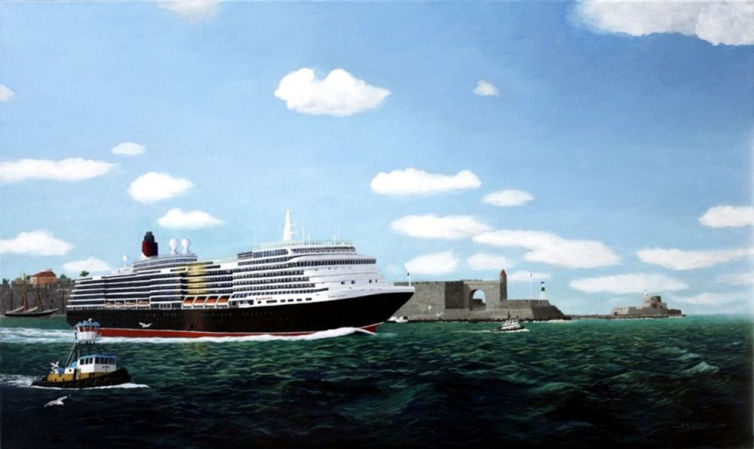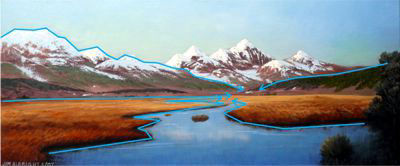The proper use of linear perspective is critical to most, if not all, landscape paintings, even in cases where that perspective may not be obvious. The most obvious example of linear perspective is a straight road running from the foreground to the background. However, linear perspective may be less obvious, but just as important, in a painting of a woods where the decreasing heights of the trees results from linear perspective. Notice, in Queen Victoria departing Rhodes, right, how the relative size of the ship, the middle ground structure to it's right and the structure on the horizon line decrease in size, thus providing a sense of depth.


